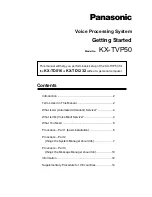
HVD3000 / HVD3000A High-Voltage Differential Probes
28
Operation
Connecting to the Test Instrument
HVD3000 and HVD3000A probes have been designed for use with Teledyne LeCroy
oscilloscopes equipped with the ProBus interface. When you attach the probe to the
oscilloscope’s input connector, the instrument will:
•
Recognize the probe
•
Set
the oscilloscope input termination to 1 MΩ
•
Activate the probe control functions in the oscilloscope user interface
NOTE: For accurate measurements, connect the probe to the oscilloscope and allow it to
warm up for at least 20 minutes. When using HVD3000 probes, perform Auto Zero prior to
connecting probe leads to the DUT. HVD3000A probes may be connected to the DUT
during Auto Zero.
Connecting to the Test Circuit
Two inputs are available at the probe tip to connect the probe to a circuit under test. For
accurate measurements, both the + and – inputs must be connected to the test circuit.
Positive voltages applied to the + input (red) relative to the – input (black) will deflect the
oscilloscope trace toward the top of the screen.
To maintain the probe's high performance capability, exercise care when connecting the
probe. Increasing the parasitic capacitance or inductance in the input paths may introduce
a “ring” or slow the rise time of fast signals. Input leads that form a large loop area will pick
up any radiated electromagnetic field that passes through the loop and may induce noise
into the probe inputs. Because this signal will appear as a differential mode signal, the
probe’s common mode rejection will not remove it. This effect can be reduced by twisting
the input leads together to minimize the loop area.
WARNING. To avoid electric shock or fire, maintain the input leads in good
condition. The leads have a jacket wear indicator that shows through when the
jacket is excessively worn. If the white "WEAR" indicator on the input leads is
visible, cease use and contact Teledyne LeCroy service for repair or replacement.
High common mode rejection requires precise matching of the relative gain or attenuation
in the + and – input signal paths. Mismatches in additional parasitic capacitance,
inductance, delay, and a source impedance difference between the + and – signals will
lower the CMRR. Therefore, it is desirable to use the same length and type of wire and
connectors for both input connections. When possible, try to connect the inputs to points in
Содержание HVD3000
Страница 1: ...Operator s Manual HVD3000 HVD3000A High Voltage Differential Probes...
Страница 2: ......
Страница 3: ...HVD3000 HVD3000A High Voltage Differential Probes Operator s Manual November 2018...
Страница 16: ...HVD3000 HVD3000A High Voltage Differential Probes 10 HVD3106 6M HVD3106A 6M TYPICAL BANDWIDTH...
Страница 47: ......
Страница 48: ...930490 00 Rev A November 2018...















































